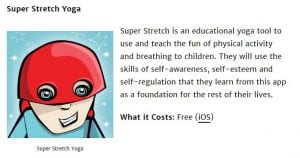Young people, especially those of secondary age are now widely recognised to be a high risk group for the development of mental health problems.
ICT can be blamed for creating some health issues for children and young people; too much digital gaming and Internet or mobile ‘phone usage can negatively affect sleeping habits, increase waking-time tiredness, cause addiction, sleep disturbances and possibly even depression.
Young people have a wide range of needs to promote their mental health, from basic information to high-level ongoing clinical support. They probably prefer not to seek traditional professional help and, compounding this reluctance, in many areas sufficient resources are not available to provide the level and types of face-to-face service they require.
As online communication is an integral and accepted part of life for today’s young people, appropriate ICT options supporting mental health should be considered. The internet can facilitate community and therapeutic counselling interventions can work for online users.
(Obviously there are challenges to ICT-based health services including inadequate access and training, lower literacy levels and the need for specialized technologies for people with disabilities.)
Children with good mental health think clearly, develop socially and learn new skills. They develop self-confidence, high self-esteem, and a healthy emotional outlook on life.
We can use ICT to support children’s good mental health & emotional well-being by finding software and apps that:
- teach kids the “language of feelings”.
- encourage creativity. …
- help children to model situations (like social stories)
- allow children to make mistakes and correct them (coding type apps)
- think positively and better of themselves
Ipad Apps
 Calm is the perfect meditation app for beginners, but also includes hundreds of programs for intermediate and advanced users. Guided meditation sessions are available in lengths of 3, 5, 10, 15, 20 or 25 minutes so you can choose the perfect length to fit with your schedule.
Calm is the perfect meditation app for beginners, but also includes hundreds of programs for intermediate and advanced users. Guided meditation sessions are available in lengths of 3, 5, 10, 15, 20 or 25 minutes so you can choose the perfect length to fit with your schedule.
Whether they need to mellow out  before bed, develop positive relationships or simply have a peaceful moment, Stop, Breathe & Think Kids offers children a fun and easy way to identify and process their emotions. From counting breaths to friendly wishes or frog jumps, each activity brings rewards to keep them engaged.
before bed, develop positive relationships or simply have a peaceful moment, Stop, Breathe & Think Kids offers children a fun and easy way to identify and process their emotions. From counting breaths to friendly wishes or frog jumps, each activity brings rewards to keep them engaged.
 Smiling Mind can be used on iPhone, iPad or a regular computer. It involves a series of short exercises, which guide children through breathing and becoming aware of their bodies to “put a smile on their mind”. It is based on the principle of “Mindfulness” – that is, being aware of taste, touch, sight and smell to be “in the moment” and truly achieve a sense of calm and perspective.
Smiling Mind can be used on iPhone, iPad or a regular computer. It involves a series of short exercises, which guide children through breathing and becoming aware of their bodies to “put a smile on their mind”. It is based on the principle of “Mindfulness” – that is, being aware of taste, touch, sight and smell to be “in the moment” and truly achieve a sense of calm and perspective.
You might try Yoga with your class? Here are a couple of apps with good ratings to help.





